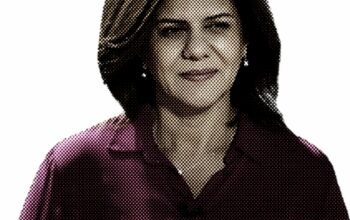A peaceful world can often look like an impossible dream. Especially lately. We may feel overwhelmed, helpless, and powerless when we read news about what is happening in the world. However, every day there are people that reject these feelings and actions. They decide to take actual steps towards peace and do something tangible to help heal the world. Johan Galtung is one of these people. Johan Galtung is a Norwegian sociologist and mathematician, born in Oslo in 1930, son of a doctor and a nurse. He is known to be the father of peace studies, having founded the Peace Research Institute of Oslo in 1959.
What sparked Galtung’s interest in peace was his father’s deportation into a Nazi concentration camp, when he was only 12 years old. They eventually released his father before the end of World War II, but the event left a profound mark on him that pushed him to investigate war and its causes. He obtained a PhD in mathematics from the University of Oslo, but his interest in peace made him pursue a second PhD in sociology. When he was 24, Galtung adhered to the peace movement and became a conscientious objector. He refused to join his country’s military service, and this decision cost him 6 months in prison where he wrote his first book about Gandhi’s ideas, “Gandhi’s Political Ethics”, with his friend and mentor Arne Næss.
Galtung devoted his entire life to building peace. He wrote over 100 books and 1,000 articles on peace and conflict solving, ecology, health, global governance, sustainable development, and economic reform. At the very beginning of his journey through peace, he decided to look at war and conflict through the lenses of medical science, rather than social sciences. He started noticing analogies between medical science and interactions between people, groups, and nations. In his approach to peace studies, he considered war as an illness which the world must heal from and, as any illness, it can be prevented and not only treated. He believed that prognosis and therapies can heal societal problems as well.
According to Galtung, we can avoid this monstrous illness working on three major things:
- Reconciliation: to treat the effects of previous violence.
- Peace building: to study and act to prevent future violence.
- Conflict transformation: to study new methods to mitigate conflicts, or to help the parts of a conflict find solutions.
Thanks to Galtung Peace building has become a key concept in today’s world. However, for Galtung, peace is not only the absence of war, but it also has a positive meaning that can lead to the economic growth and development of people and of entire nations. Galtung is widely known because he introduced the concept of Positive Peace. This concept describes peace as a constructive process that the scholar developed through years and years of research and growth. He made the distinction between negative and positive peace after reading Marie Jahoda’s book, Current Concepts of Positive Mental Health. He described the former as the absence of conflict, and the latter as collaboration and harmony between people and countries.
The model of Positive Peace is so influential that the Institute of Peace and Economics puts a genuine effort into bringing this model to communities all around the globe. As mentioned above, Galtung was truly inspired by Gandhi’s life and theories, and he remained a reference point through all his work. During the opening conference of the first International Day of Non-violence, on 2 October 2007 (Gandhi’s birthday), Galtung summed up two of Gandhi’s main teachings:
- Never fear dialogue.
- Never fear conflict: it is a challenge, not a danger.
Like many other scholars, Galtung studied and elaborated theories on how to prevent and solve conflict. To prevent war and implement peace, the very first step is understanding the difference between war and conflict. Conflict, without violence, is a necessary aspect in human life, as a confrontation with diversity is often a learning and growing opportunity. To avoid violence in conflict, and to turn violent conflicts into non-violent ones, Galtung developed the Transcend Method. The Transcend Method offers an interpretation of conflict through a model, the Conflict Triangle. Each vertex of the triangle has a letter (A, B, C) that represents:
- A for Attitudes/Assumptions: what lays within the parts of a conflict, such as racism, discriminatory attitudes, sexism, victimhood, trauma.
- B for Behaviour: how the parts of a conflict act (violence, genocide, insurgency attacks, discriminatory acts).
- C for Contradictions: the relationship between the parts of a conflict (inequality, dispute over territory or resources).
Every conflict has these three elements, but only the B element is manifest, while A and C are latent elements.
Conflicts can be symmetric and asymmetric. In the first case, there is a balance between all the parts of a conflict, and it generally happens at a micro-level (interpersonal conflicts). In the second case, there is a power imbalance, and it generally happens on a macro-level. Symmetric conflicts are usually solved through mediation, while asymmetric conflicts need a rebalance before going through mediation.
Galtung created another triangle, the non-violence triangle. Every vertex of the conflict triangle has a correspondent vertex on the non-violence triangle.
- On vertex A, there is Empathy.
- On vertex B, there are non-violent actions and dialogue.
- On vertex C, there is creativity.
According to this new model, Attitudes can be overcome through empathy, while Behaviours can become nonviolent. Contradictions can be overcome through creativity and through the search for solutions that all parts of a conflict can benefit from. Thanks to these Galtung’s models and research, peace has become something that we can actively work on, and not just dream of. His studies gave us new points of view to look at conflicts, and new ways of solving them. He paved the way for new studies to be made and new models to be created according to the evolutions of our societies.
Francesca Cuomo
Sources:
https://rightlivelihood.org/the-change-makers/find-a-laureate/johan-galtung/ (last access 09/03/2022).
https://festivaldirittiumani.it/approfondimenti-edu/6/assets/FDU_PacePositiva.pdf (last access 09/03/2022).
https://www.unimondo.org/Guide/Guerra-e-Pace/Peace-research/Un-intervista-a-Johan-Galtung-146773 (last access 09/03/2022).
http://www.nonviolenza.ch/images/stories/approfondimenti/salio_galtung.pdf (last access 10/03/2022).
https://sites.chapman.edu/capstoneprojectsinpeacestudies/2019/02/22/galtung-and-the-conflict-triangle/comment-page-1/ (last access 10/03/2022).
https://en.wikipedia.org/wiki/Johan_Galtung (last access 10/03/2022).



